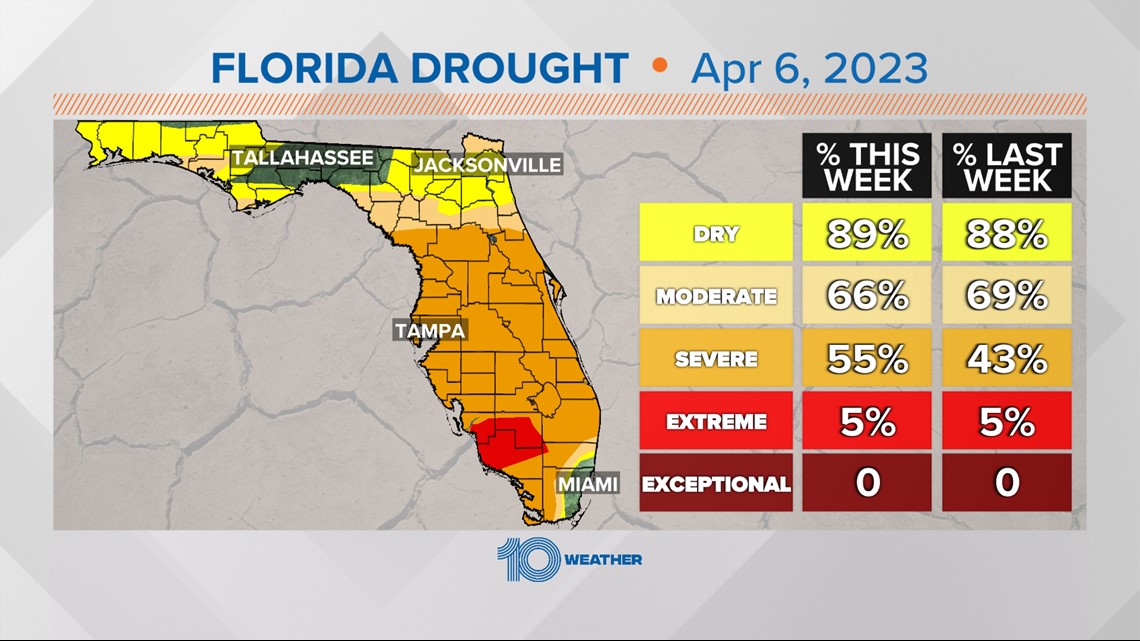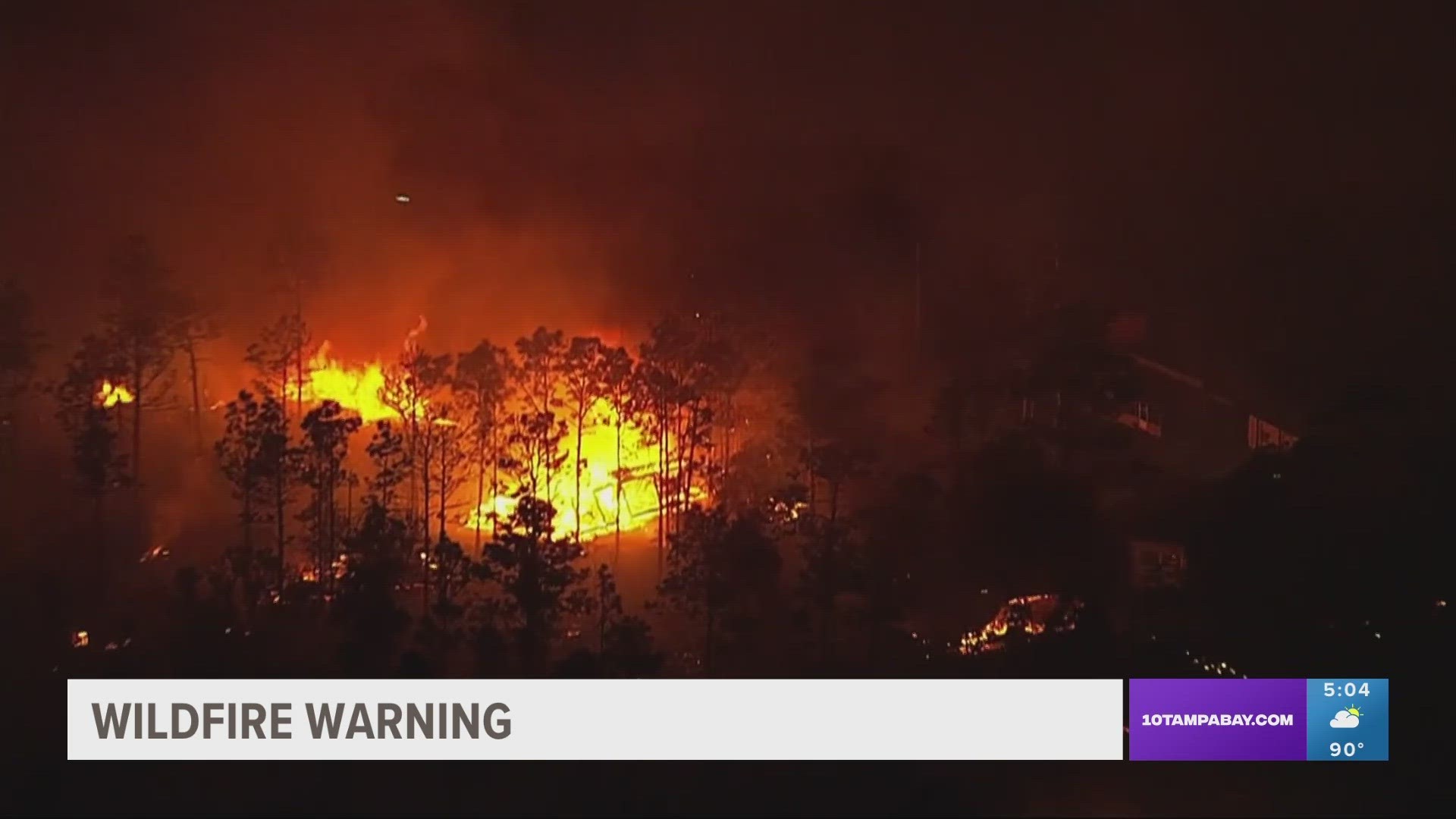ST. PETERSBURG, Fla. — More than 1,000 wildfires have been reported across Florida in recent months, indicating an active season and one with no immediate relief in sight, according to state officials.
Commissioner of Agriculture Wilton Simpson and Florida Forest Service leadership stressed during a news conference Thursday in Hillsborough County about the need to be prepared should a wildfire threaten — and how to prevent them:
- Prepare your home regularly by clearing your roofs and gutters of debris
- Prepare your yard by creating and maintaining a defensible or buffer around your home
- Be smart and vigilant when burning yard waste
- Report a potential wildfire or arson activities to law enforcement
“The wildfire that does not start is the one that does not need to be fought,” said Simpson, urging Floridians to be vigilant. “We have very dry conditions all over the state. Near drought conditions. Or extremely dry.”


“It’s been a busy wildfire year so far from Jan. 1 to April 2,” said Rick Dolan, Director of the Florida Forest Service. “We’ve had 1,098 fires for 35,424 acres. These total include state, private, and federal lands.”
Dolan said north Florida received recent rain but with a couple of dry weeks, that could change their fire activity. He noted that central and south Florida are extremely dry and the farther south you go, the dryer it is.
"Southwest Florida is the dryest part of the state, around the Fort Myers area," Dolan said. "Very dry right now."
While some of the fires have been sparked by lightning, the majority, say state forestry workers, are started by arson and carelessness.
A portion of Southwest Florida is considered to be in an "extreme" drought, according to the latest U.S. Drought Monitor report. This is also in an area with a lot of dead vegetation from Hurricane Ian.
The dead blowdown debris and dry conditions mean that wildfire risks will be elevated until the rainy season, which begins in mid-late May.
Dolan said with the upcoming lightning season quickly approaching, more wildfires are expected.
“You know, we’re just asking everybody to be vigilant,” said Simpson. “This has already been a very busy season. And obviously, we have to mitigate that through a lot of safety measures.”
State workers say they have enough equipment and enough manpower to handle what comes their way. But that early start has also been grueling. And that’s before entering storm and lightning season.
“Every fire that is prevented is one that our people don’t have to go and try to put out and put them in harm’s way unnecessarily,” said Dolan.
Elsewhere, a "severe" drought is dominating much of the Tampa Bay area and peninsula. Severe drought means possible impacts on our area including crop or pasture losses, water shortages and water restrictions. The lack of rain and drought conditions also increases the fire risk across the area.
All it takes, they say, is a spark and the right weather conditions.
Because of that, forestry workers say we’ve now got some additional resources in the state including an air tanker base has been set up in Lake City with two air tankers. Those planes can respond to wildfires statewide.
The federal government also has four helicopters staged at a base in Ocala.

